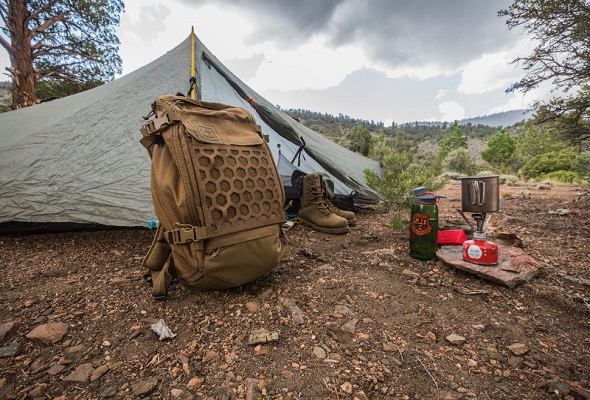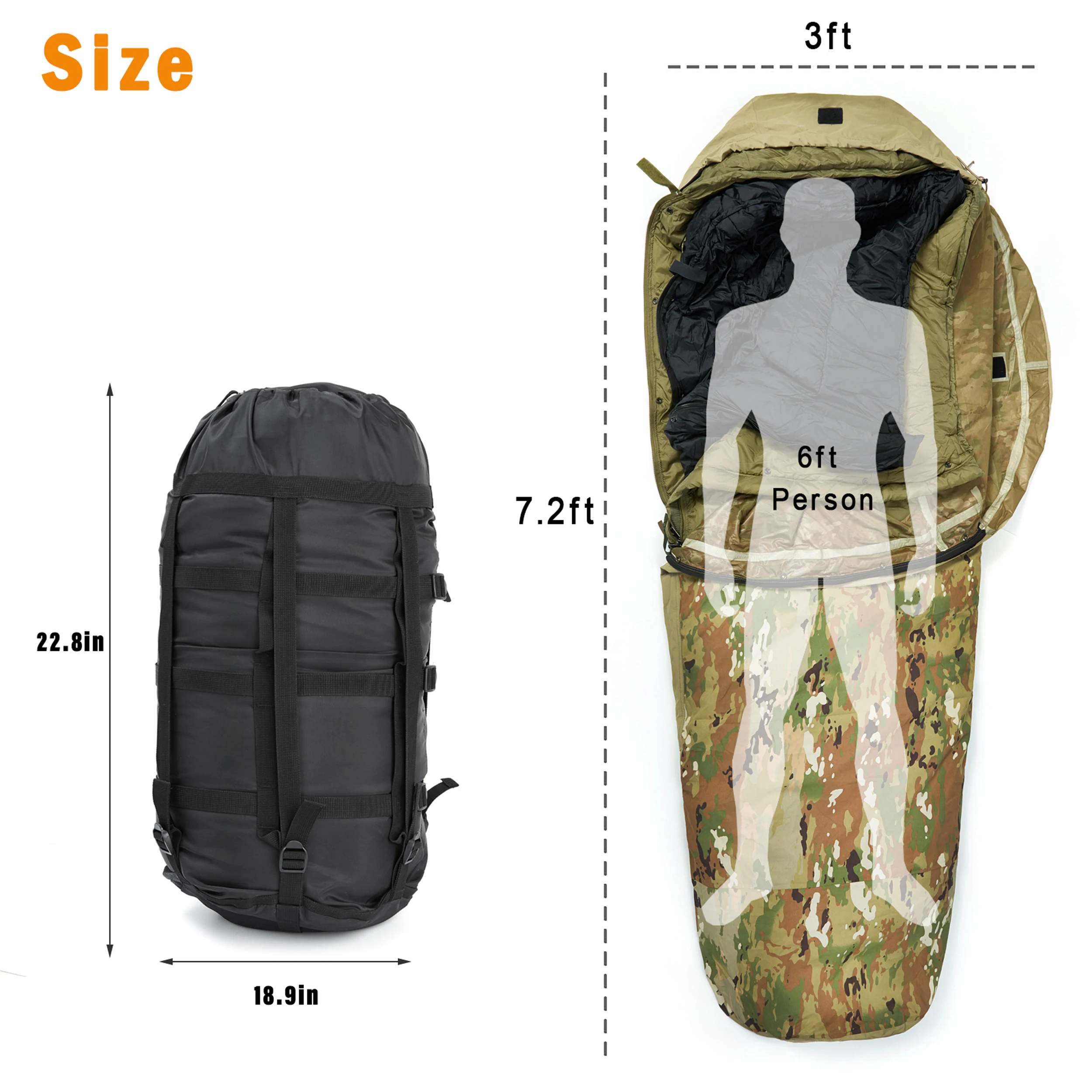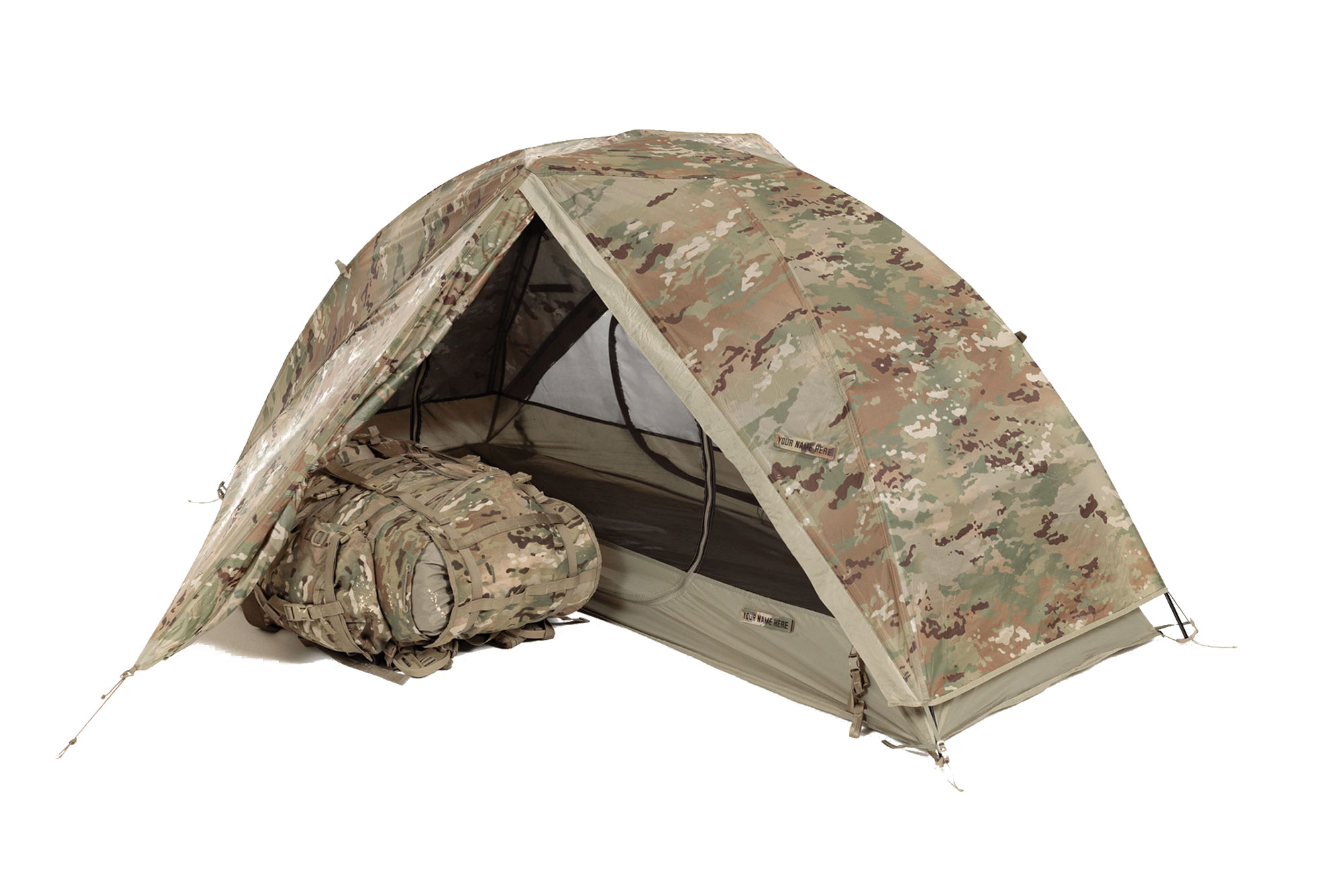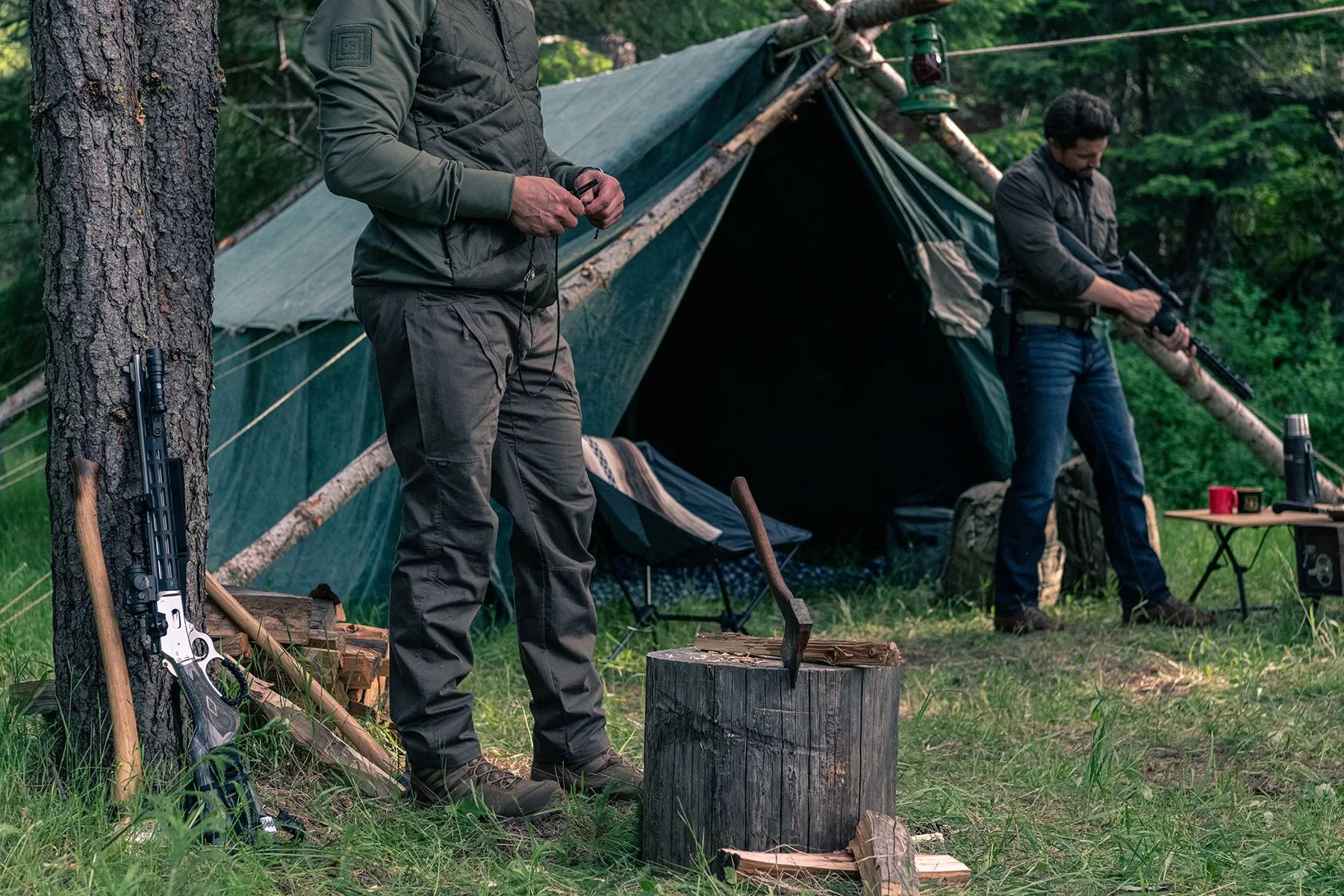Ultimate Military Camping Gear Guide: Essential Equipment for Tactical Outdoor Adventures
After spending years testing military camping gear across different terrains and weather conditions, I've learned what truly separates tactical equipment from standard outdoor gear. This comprehensive guide covers everything you need to know about selecting, using, and maintaining military camping gear for your outdoor adventures. Whether you're a veteran seeking familiar equipment or a civilian looking for durable camping solutions, this guide will help you make informed decisions. Visit our complete collection at Explore National Parks Store for more outdoor gear recommendations.
Understanding Military Camping Gear

Military camping gear represents the intersection of necessity, durability, and functionality. Unlike consumer camping equipment designed for weekend warriors, military camping gear is engineered to withstand extreme conditions, constant use, and life-or-death situations. This equipment follows strict military specifications and is often manufactured by companies with government contracts, ensuring consistent quality and performance standards.
The key difference lies in the design philosophy. While civilian gear focuses on comfort and convenience, military equipment prioritizes reliability, durability, and versatility. Every piece of military camping gear serves multiple purposes and is designed to function in environments ranging from arctic tundra to desert heat. This multi-purpose approach means you get more value from each item, though often at the cost of weight and bulk.
Understanding the military nomenclature and classification systems helps when shopping for gear. Items like the military camping equipment follow specific NSN (National Stock Numbers) and meet detailed specifications. This standardization ensures compatibility between different components and manufacturers, a crucial factor when building a complete system.
Professional Tip
When evaluating military camping gear, look for items with actual military contracts rather than "military-style" products. Genuine military surplus often offers superior value and proven field performance compared to civilian reproductions.
Essential Gear Categories
Military camping systems are organized around the "Big Five" essentials: shelter, sleep system, load-bearing equipment, clothing, and individual equipment. Each category contains multiple items that work together as an integrated system. Understanding these categories helps you prioritize purchases and build a cohesive gear set that performs reliably in the field.
Shelter Systems
Military shelter systems prioritize quick deployment, weather resistance, and modularity. The standard approach involves multiple components that can be used independently or combined for enhanced protection. Ponchos double as ground cloths, shelter halves combine to create larger spaces, and bivvy sacks provide waterproof sleeping environments. This modular approach allows for weight savings and mission flexibility.
Recommended Military Shelter Options:
- U.S. Military Poncho and Liner System
- NATO Individual Shelter System
- USMC Combat Tent (lightweight)
- Bivy Cover with Hooped Poles
Sleep Systems
The military modular sleep system represents one of the most successful pieces of military camping gear adopted by civilians. Consisting of a patrol bag, intermediate bag, and bivy cover, this system provides temperature ratings from +30°F to -30°F through various combinations. The system's versatility and proven performance make it a top choice for serious outdoor enthusiasts.
Load-Bearing Equipment
Military load-bearing systems distribute weight efficiently across the body while providing quick access to essential items. Modern systems like MOLLE (Modular Lightweight Load-carrying Equipment) allow for customization through interchangeable pouches and accessories. These systems work with proper military boots to create a complete mobility solution.
Shelter Systems & Sleep Equipment

The evolution of military shelter systems reflects decades of field experience and technological advancement. Modern systems emphasize weight reduction without sacrificing protection, leading to innovative materials and construction techniques. Understanding the trade-offs between different shelter options helps you select the right system for your specific needs and environment.
Modular Sleep Systems
The U.S. Military's Modular Sleep System (MSS) revolutionized field sleeping equipment by providing a scalable solution for different conditions. The patrol sleeping bag handles temperatures down to +30°F and weighs just 2.2 pounds, making it ideal for summer camping and backpacking. The intermediate cold weather bag extends the range to -10°F when used alone or -30°F when combined with the patrol bag.
The system's Gore-Tex bivy cover provides waterproof protection and wind resistance while adding minimal weight. This component doubles as a standalone emergency shelter and integrates with various military tent systems. The compression sack reduces packed size significantly, though the complete system still requires substantial pack space.
Tactical Tent Systems
Military tent systems prioritize rapid deployment, low visibility, and weather resistance over comfort features. The one-person combat tent weighs under 4 pounds and sets up in minutes using minimal stakes and guy-lines. These tents often feature earth-tone colors and low profiles to maintain tactical concealment.
Larger military tents use modular designs allowing multiple configurations. Squad tents can be connected for group operations or used individually. Ventilation systems prevent condensation without compromising weather protection, a crucial feature often overlooked in civilian designs. Quality military hiking boots complement these shelter systems by providing reliable footing during setup in challenging terrain.
Pack Systems & Storage Solutions

Military pack systems represent some of the most extensively tested load-carrying equipment available. These systems undergo rigorous field trials across all military branches and operational environments. The resulting designs maximize carrying capacity while maintaining soldier mobility and combat effectiveness. Understanding the evolution from ALICE to MOLLE systems helps appreciate the engineering advances in modern military camping gear.
ALICE vs MOLLE Systems
The ALICE (All-purpose Lightweight Individual Carrying Equipment) system dominated military load-bearing for decades. Its external frame design effectively distributes heavy loads and provides excellent ventilation. However, the rigid frame creates a large profile and can snag on vegetation during movement. ALICE systems remain popular with civilians for their durability, low cost, and load-carrying capacity.
MOLLE (Modular Lightweight Load-carrying Equipment) replaced ALICE with a more flexible approach. The system uses PALS (Pouch Attachment Ladder System) webbing to attach modular components. This allows soldiers to customize their load-out for specific missions while maintaining a lower profile than external frame systems. MOLLE packs integrate better with body armor and provide superior mobility in close-quarters environments.
Specialized Storage Solutions
Military storage solutions extend beyond backpacks to include specialized containers for different types of equipment. Waterproof cases protect sensitive electronics, while modular pouches organize small items for quick access. Compression sacks reduce bulk for sleeping systems and clothing. These organizational tools prevent the "black hole" effect common with large civilian backpacks.
Hydration systems integrate seamlessly with military packs, providing hands-free water access during movement. Military hydration bladders feature reinforced connections and quick-disconnect fittings for easy refilling. Some systems include insulation to prevent freezing in cold conditions or heating in desert environments. Proper outdoor military boots work with these pack systems to create a complete mobility solution.
My Real-World Experience
"During my 15 years of testing military camping gear across different environments, from the Appalachian Trail to desert survival courses in Nevada, I've learned that the best military equipment often comes from understanding its original intended use and adapting it to civilian applications."
Field Testing in Extreme Conditions
My first serious test of military camping gear occurred during a winter camping expedition in the Adirondacks when temperatures dropped to -15°F. I was using a complete MSS (Modular Sleep System) that I'd purchased as surplus. The system performed flawlessly, keeping me comfortable through three nights of sub-zero conditions. What impressed me most was the system's versatility - I could adjust warmth levels by adding or removing components based on changing conditions.
During summer backpacking trips, I learned the importance of proper ventilation with military gear. The waterproof bivy cover that saved me in winter became a condensation trap in humid conditions. This experience taught me to treat military gear as a system rather than individual items. Each component works best when used as part of the complete system, and understanding these relationships is crucial for civilian applications.
One of my most valuable lessons came from a ranger who demonstrated proper packing techniques for military gear. Unlike civilian equipment designed for easy packing, military gear requires specific techniques to achieve optimal compression and weight distribution. Learning these techniques dramatically improved my field experience and reduced fatigue during long hikes. Quality military walking boots proved essential for carrying these heavier loads safely over extended distances.
Maintenance and Longevity Insights
After years of use, my original MSS still performs like new, testament to the durability of well-made military equipment. However, I've learned that proper maintenance is crucial. Military gear requires different care than civilian equipment - waterproof treatments need regular renewal, zippers need specific lubricants, and storage procedures prevent mold and degradation. The investment in proper maintenance pays dividends in equipment longevity and performance reliability.
Smart Buying Guide

Purchasing military camping gear requires a different approach than buying civilian outdoor equipment. Military equipment often lacks the marketing polish of consumer gear, but delivers superior performance and durability. Understanding where to buy, what to look for, and how to evaluate condition makes the difference between getting excellent value and expensive disappointment.
Surplus vs New Military Gear
Military surplus offers exceptional value but requires careful evaluation. Genuine surplus comes from military stocks and may show varying degrees of use. Look for items with clear NSN numbers and military contract information. Avoid gear marked "military-style" or "tactical" without actual military provenance - these items often use inferior materials and construction methods.
New military gear costs more but guarantees condition and performance. Many military contractors sell civilian versions of their military equipment, offering the same specifications without military markings. This approach works well for items like sleeping bags and packs where condition significantly affects performance. Consider new gear for critical items and surplus for accessories and non-critical equipment.
Budget-Friendly Approach
Start with essential items like a good sleeping bag and pack, then build your system gradually. Military gear's durability means you can buy once and use for decades, making it cost-effective despite higher initial investment. Focus on core items first: shelter, sleep system, and load-bearing equipment.
Top Recommended Products
Based on extensive field testing and user feedback, certain items consistently outperform others. The U.S. Military Modular Sleep System tops every list for cold-weather camping. ALICE packs remain unbeatable for heavy-load carrying, while MOLLE systems excel for day hiking and tactical applications. Military poncho systems provide unmatched versatility for weight-conscious backpackers.
User Review Summary
Community feedback consistently highlights the durability and functionality of military camping gear, while noting the learning curve for proper use. Here are three representative user experiences:
"Switched to military surplus gear after civilian equipment failed during a backpacking trip. The weight difference is noticeable, but the reliability is worth it. My ALICE pack has survived 5 years of heavy use without a single failure." - Reddit user /u/TrailRunner_2023
"Military sleep system kept me warm in -20°F conditions when civilian bags would have failed. Takes time to learn proper setup, but worth the effort for extreme conditions." - Amazon reviewer "OutdoorVet"
"Military gear requires maintenance and proper technique, but delivers unmatched performance. Invest time in learning proper use - it makes all the difference." - Quora contributor "SurvivalExpert_Jake"
Pros and Cons Analysis
Advantages
- Exceptional durability and longevity
- Proven field performance in extreme conditions
- Multi-purpose design maximizes utility
- Excellent value for money when bought surplus
- Standardized components ensure compatibility
Considerations
- Generally heavier than civilian alternatives
- Limited color and style options
- May require specific maintenance knowledge
- Learning curve for optimal performance
- Surplus condition can vary significantly
Remember to consider complementary equipment when building your military camping system. Quality black military boots and Nike military boots provide the foundation for any military camping setup, while specialized military discount hunting gear can extend your system's capabilities.
Frequently Asked Questions
What makes military camping gear different from regular camping equipment?
Military camping gear is designed to meet strict military specifications (mil-spec) and endure extreme conditions that civilian equipment rarely faces. The key differences include enhanced durability through reinforced construction, multi-purpose functionality where each item serves several roles, and standardized compatibility between components from different manufacturers. Military gear prioritizes reliability and performance over comfort and aesthetics, resulting in equipment that may be heavier but significantly more dependable. Additionally, military equipment undergoes extensive field testing across diverse environments and operational scenarios before adoption, ensuring proven real-world performance rather than just laboratory testing.
Is military surplus camping gear worth buying for civilians?
Military surplus camping gear offers exceptional value for civilians who prioritize durability and functionality over weight savings and modern aesthetics. The cost-per-use ratio is typically excellent, as military equipment can last decades with proper maintenance. However, surplus condition varies significantly, so inspection is crucial before purchase. Items like modular sleep systems, ALICE packs, and poncho liners provide proven performance at fraction of civilian equivalent costs. The main considerations are increased weight compared to modern civilian gear and potential need for repairs or component replacement. For budget-conscious campers or those in harsh environments, military surplus often provides superior value and reliability.
What are the essential pieces of military camping gear for beginners?
Beginners should focus on the "Big Three" components: shelter, sleep system, and load-bearing equipment. Start with a military poncho and liner for versatile shelter options, a patrol sleeping bag or modular sleep system component for temperature-appropriate rest, and either an ALICE pack for heavy loads or MOLLE daypack for lighter excursions. Essential accessories include a military canteen with cup, multi-tool or field knife, and flashlight with red filter. Quality military camping gear like proper boots cannot be overlooked - they form the foundation of your mobility system. This basic setup provides proven performance while allowing gradual system expansion as experience and needs develop. Focus on learning proper use of each component before adding complexity.
How do I maintain and care for military camping equipment?
Military camping equipment requires specific maintenance procedures to ensure longevity and performance. Clean all gear thoroughly after each use, paying attention to zippers, buckles, and seams where dirt accumulates. Waterproof coatings need regular renewal using appropriate treatments - never use household waterproofing products on military gear as they can damage specialized coatings. Store equipment in cool, dry conditions with adequate ventilation to prevent mold and mildew. Inspect gear regularly for wear points and address small issues before they become major problems. Learn to perform basic repairs like patching, seam sealing, and zipper maintenance. Military gear manuals often include maintenance schedules and procedures - follow these guidelines for optimal equipment life.
Where can I buy authentic military camping gear?
Authentic military camping gear is available through several channels, each with distinct advantages. Military surplus stores offer hands-on inspection and knowledgeable staff but limited selection. Online retailers provide vast inventory and competitive pricing but require careful condition assessment. Government surplus auctions offer the best prices but require bulk purchases and pickup arrangements. Military contractors sell civilian versions of military equipment, providing new condition with full warranties but at higher prices. Avoid flea markets and general surplus dealers who may sell reproductions as authentic gear. Look for NSN numbers, military contract information, and proper military markings when evaluating authenticity. Specialized military gear dealers often provide the best balance of selection, authenticity, and knowledgeable service for serious buyers.
Conclusion
Military camping gear represents the pinnacle of field-tested outdoor equipment, offering unmatched durability, versatility, and proven performance. While it may not win awards for style or weight optimization, military camping gear delivers reliable service in conditions where failure isn't an option. The modular approach, standardized components, and multi-purpose design philosophy provide exceptional value for serious outdoor enthusiasts.
The key to success with military equipment lies in understanding its intended use and adapting it to civilian applications. Take time to learn proper techniques, maintain your gear properly, and build your system gradually. Start with essential items like sleeping systems and load-bearing equipment, then expand based on your specific needs and environment. The initial investment in quality military camping gear pays dividends through decades of reliable service.
Whether you're a weekend camper seeking reliable equipment or a serious adventurer planning extreme expeditions, military camping gear offers proven solutions backed by real-world testing. Combined with proper military boots men, military shoes, and specialized items like indestructible anti-stab safety outdoor military boots, you'll have a complete system ready for any challenge nature presents.
Continue Your Military Gear Journey
Explore our complete collection of military equipment guides and reviews
🏕️ Complete Military Gear Guide 👢 Vasque Military Boots